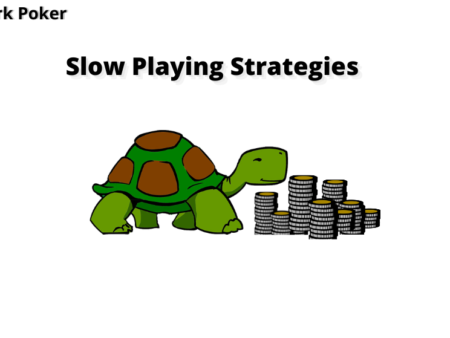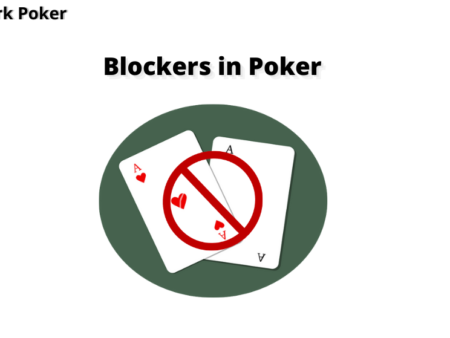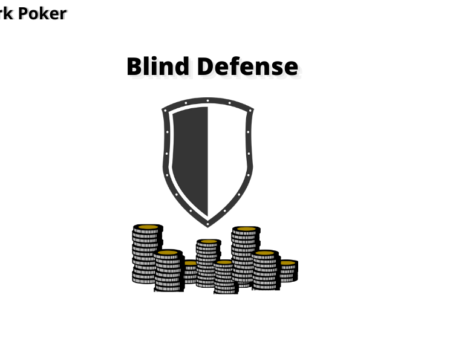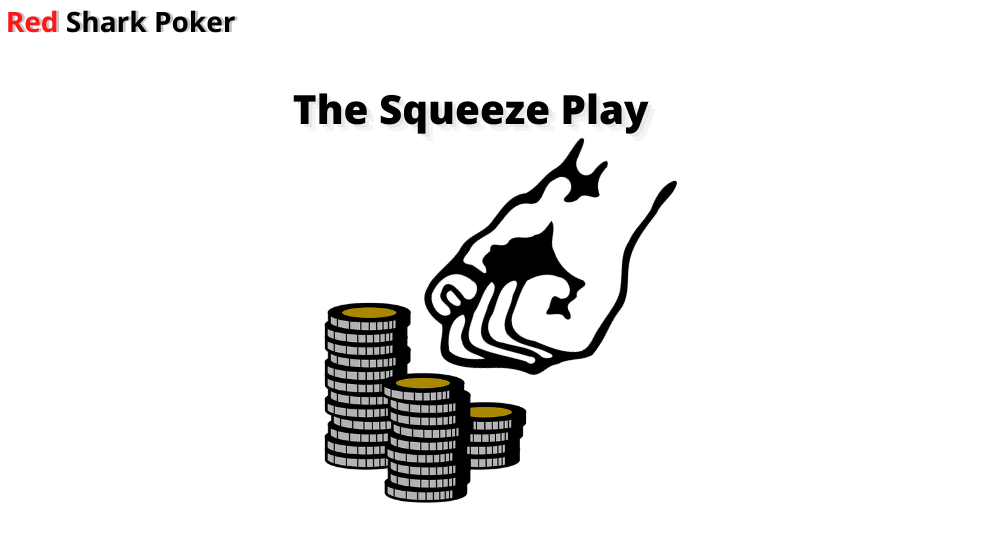
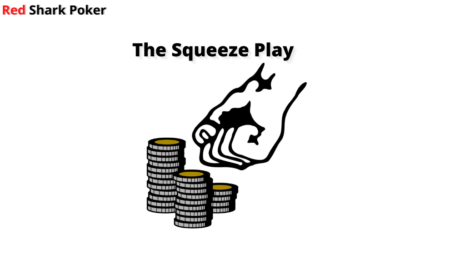
A squeeze play is a special form of re-raise on the preflop (3bet), designed to make all the opponents fold. It is an advanced play where you force the initial raiser along with 1 or more callers to fold. This play can help you win a substantial pot as two or more opponents fold to your re-raise before seeing the flop. Let us learn when and how to make a successful squeeze play so that you can win a sizeable pot on the preflop.
What is a Squeeze Play in Poker?
A squeeze play is a preflop re-raise that is made after there has been a raise with one or more callers. This advanced move is often used as a bluff to take down the pot in both cash games and tournaments.
A squeeze play is usually made when a loose player raises from an early position, and another player calls before you. As loose players tend to open too many hands, the chances are that their hands may not be super strong. Also, when a player or two just call the raise, the chances are that their hands might not be that strong as well. You take advantage of this situation and make a big re-raise to force your opponents to fold and win the pot.
A Raise from Early Position –> 1 or More Players Call Before You –>You Re-raise –> Everyone Folds
An Example of Squeeze Play
Let us look at an example of squeeze play in a $2/$5 cash game.
Preflop
Player A (Loose): Raises to $15 from UTG
Player B (Loose): Calls from Middle Position
Player C: Re-raises to $68 from the Button
Everyone folds, and Player C wins the pot.
How Does a Squeeze Play Work?
In the above example, Player C made a squeeze play and forced Player A and B to fold on the preflop. Let’s look at how Player C executed the successful squeeze play.
- Player A is a loose player who opens with a wide range of hands. As he raised to the usual 3X Big Blind, the chances are that he might not be holding a premium or super strong hand.
- Player B is also a loose player who might be calling with a very wide range of hands. He might not be holding a strong hand and is just calling to see a cheap flop.
- Player C takes advantage of this situation and makes a squeeze play from a late position. His big re-raise represents a very strong range. Player A and Player B fold their weak hands against Player C’s perceived strong range.
Range for Squeeze Play
There is no specific range of hands with which you must squeeze. It depends more on the situation, not on the range. If one of your opponents do call your re-raise, you will still have a range advantage for being the 3-bet aggressor. You can bluff effectively if the board favours the typical 3-bet range.
The success of your squeeze depends on the initial raiser and the cold callers before you. So, you should tighten or loosen your range according to your opponent.
Initial Raiser
- If the initial raiser is a loose player, you can widen your range.
- If the initial raiser is a tight player, you should tighten your range.
Cold Caller (who called the initial raiser)
- If the cold caller is a loose player, you can widen your range.
- If the initial raiser is a tight player, you should tighten your range.
However, if multiple opponents call your re-raise, your equity (whatever hands you hold) can suffer. So, it is always better to squeeze in poker with hands that have good preflop equity. Premium hands like AA, KK, QQ, AK, AQ, JJ and TT are the safest hands for squeeze plays, which can help in value betting if you connect post-flop. Also, hands like AT, KQ, QJ, JT, 99 and 88 can also be used for a squeeze play.
What Should be the Re-raise Size?
If your re-raise size is not big enough, one or all of your opponents will end up calling. So, the recommended size is around 4 to 5 times the size of the initial raise. For example, if the UTG raises to 3X big blind and the MP calls, you should raise at least re-raise to 12X big blind. Such a big re-raise will force your opponents to fold.
Consider your stack size before squeezing in poker. You can re-raise to 4 or 5 times the size of the initial raise only if you have a sufficient stack. A re-raise of 2 to 3 times the size of the initial raise with a short stack won’t be effective in forcing your opponents to fold.
When to Squeeze in Poker?
Poker squeeze is an advanced play that should be attempted with caution. Let’s look at some of the factors that you must consider for executing a successful squeeze play in poker.
Late Position
It is always better to squeeze from a late position, preferably from the cutoff or the button. You get all the information required for executing a poker squeeze from these positions. You can find out if the initial raiser and the cold caller are playing tight or loose. If you get called, you will still have the best position post-flop. You can choose to bluff post-flop based on the actions taken by your opponents if you don’t connect with the board.
Read on Your Opponents
The success of your squeeze depends on how likely your opponent is going to fold to your re-raise. So, have a good read on your opponents before attempting to squeeze. If you are thinking of squeezing with marginal hands, be very confident that your opponents will fold. Look out for a loose initial raiser and a loose cold caller before you carry out your bluff. The more read you have on your opponent, the more likely you will be able to execute a successful squeeze bluff. If you are using a HUD, look for Fold to Squeeze% to see how often your opponent folds to squeeze plays.
Your Table Image
A big re-raise suggests that you have a big hand. If you are not able to convey this message to your opponents, your squeeze will probably not work. So, your table image plays an important role in conveying this message to your opponents. If your table image is that of a tight player who always re-raises with strong hands from late position, your opponents will most likely fold to your 3-bet. However, if your table image is that of a loose player who 3-bets often from a late position, your opponents will not take you seriously. Also, maintain a balanced squeezing frequency so that your opponents take your 3-bets seriously.
Read: How to Bluff in Poker?
Conclusion
Squeezing is a situation-dependent play where you need to have the right conditions for successful execution. You need to have accurate reads on your opponent so that you are confident of them folding to your re-raise. When you find the right type of initial raiser and cold callers, don’t be scared to make a squeeze play. Make the right re-raise size to force your opponents to fold and take down the pot. Good luck, and enjoy a good squeeze!

